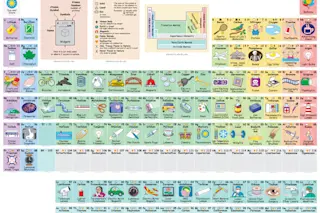Wouldn't it be useful if an aging, weakening bridge started to turn red as a warning to structural engineers? That's the potential inherent in a new invention from a team of chemists and materials scientists, who created a plastic that turns red when it's exposed to stress.
Ultimately, such color-changing polymers could be used as coatings on everything from bridges to airplane wings, alerting engineers when vital structures are near failure [ScienceNOW Daily News].
To make the red-alert plastics, researchers placed
small ring-shaped molecules that they call "mechanophores" in the center of polymer chains. In response to mechanical force, these rings break, changing the color of the polymer [ScienceNOW Daily News].
In the study, published in Nature, lead researcher Nancy Sottos tested the stretchy plastic material her team had created,
which stretched about as much as a Stretch Armstrong doll, by pulling on it until it broke. The bright red ...













